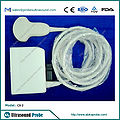File:11 C5-2.jpg
11_C5-2.jpg (600 × 600 pixels, file size: 218 KB, MIME type: image/jpeg)
Turtle or Tortoise?First off, I want to explain a few differences between a turtle and a tortoise.
Turtles spend most of their time in water, whereas tortoises spend most of their time on land.
Turtles are more likely to adapt to an aquatic lifestyle when the weather gets cold, finding warm ground in the water by digging and making a nest area. Tortoises, on the other hand, will more than likely drown in deep waters and waters with a fast current.
Turtles' front feet are mostly fins, whereas tortoises have hard, scaly feed that are built to crawl across sharp rocks and sand. Tortoises often have front claws that help them dig burrows to nest in during hot weather.
Turtles have a flat shell, whereas tortoises have a rounded dome shell.
Caring for Russian TortoisesRussian tortoises are native to the continent of Asia,Haiying Compatible Ultrasound Probe more specifically in the Ukraine, Russia, Afghanistan, Pakistan, Iran, and parts of China.
Like with more land tortoises, they tend to live up to 100 years, so before you get a Russian tortoise, make sure that you're prepared for a life long commitment. These guys aren't something that when you're tired of caring for the you can just throw out; these guys will more than likely live longer than you.
Russian tortoises tend to grow about an average size of 4" to 10" in length.
If you decide that you're in for the commitment of caring for a Russian tortoise, you'll want to find a reputable breeder. Before you bring home a pet tortoise, you really should do all the research that your can, so that you don't have any questions about care and diet after you've got the tortoise in your home. You want to make sure that you have the enclosure already set up and your veggies and supplements ready.
When you first get a your tortoise, you want to take it to a reputable herpetological veterinarian, so that you can make sure that the tortoise is healthy. Because most Russian tortoises are actually wild caught, you want to make sure that yours is healthy, as most wild caught specimens have parasites as well as other health illnesses, but this can be true of wild caught or captive bred.
Make sure that the vet weighs the tort and does the fecal exam.
A Russian Tortoise EnclosureOnce you get a clean bill of health from your veterinarian, Haiying HY7208C3you'll need to make sure that you have the ideal cage setup ready. You can either purchase a plastic storage bin or a glass aquarium; if you use a storage bin, you'll want to leave the lid off for proper ventilation. It's ideal that if you have good climate, that you set up a pen outside. Russian Tortoises prefer to be outside and like large outdoor pens (at least 4' x 3').
If you prefer to keep the tortoise inside, you'll want to make sure that the tank or tub is large. Tortoises like to explore. As for the ideal size aquarium, you'll want at minimum a 75 gallon tank, and for a storage tub, you'll want at least a 50 gallon container. For babies, you can go a little smaller, but as for adult sized enclosure, you don't want to go any lower than a 75 gallon glass tank or a 50 gallon plastic container.
It's best that you take dark paper or tape and block off the bottom 10" or so so that the tortoise can't see out of the tank or tub (if the tub is clear); but doing this you can reduce stress because the tortoise will try and try to go to the other side of the enclosure walls if he can see to the other side. You can purchase colored storage bins so that you don't have to worry about taping up the bottom. Other options include bed a beast (which you can find in a compressed brick form).
You don't want the substrate to be too dry, but not overly moist either. The best way to achieve this is to pour a pan of water (about 48 ounces of water will do) into the enclosure once a week and mix up the substrate. It'll dry before the next week, but that'll be ok.
The ideal humidity is around 70%, so make sure to mist the substrate just a little to help create the ideal humidity.
The best and most accurate way to measure the temperature is by using a digital thermometer with a probe. Without this particular type of thermometer, you tortoise may not be getting the accurate temperatures, which can lead to health concerns.
File history
Click on a date/time to view the file as it appeared at that time.
| Date/Time | Thumbnail | Dimensions | User | Comment | |
|---|---|---|---|---|---|
| current | 01:43, 12 March 2016 |  | 600 × 600 (218 KB) | Dsgdxc (talk | contribs) | Turtle or Tortoise?First off, I want to explain a few differences between a turtle and a tortoise. Turtles spend most of their time in water, whereas tortoises spend most of their time on land. Turtles are more likely to adapt to an aquatic lifestyle... |
You cannot overwrite this file.
File usage
There are no pages that use this file.